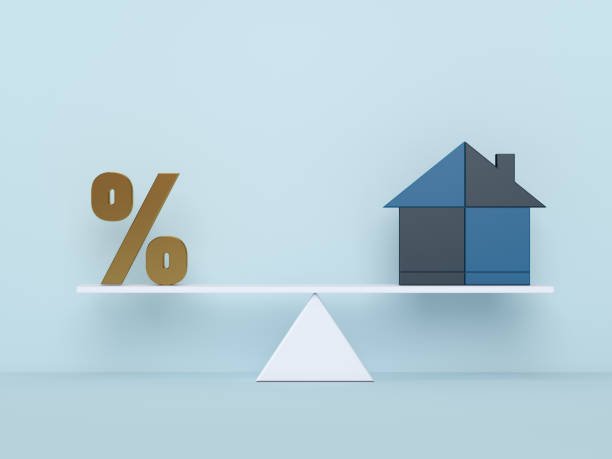
How the Bank of Canada Shapes Your Mortgage Rate (and Why 2025 Feels So Tense)
The Bank of Canada doesn’t set your mortgage rate directly — but its policy moves ripple through bond markets, lending rates, and borrower sentiment. In 2025, with inflation fears lingering and election uncertainty rising, this article explains how the BoC’s decisions are keeping homeowners and buyers on edge.
Why every Canadian homeowner keeps one eye on the Bank of Canada
Picture the Bank of Canada as the quiet conductor of a very loud orchestra. Eight times a year, the Bank raises (or lowers) a tiny baton called the target overnight rate. The move itself takes place in polished boardrooms, far from your living-room couch—but within minutes the ripples race outward, nudging your bank’s prime rate, your line of credit, and, most nerve-wracking of all, your variable mortgage payment.
If you’ve ever watched your lender’s mobile app right after a BoC announcement, you know the feeling: will my payment jump, or do I finally get a breather? In this deep dive we’ll unpack how the Bank of Canada’s overnight rate works, why it matters far beyond Bay Street, and what the roller-coaster history of the last ninety years can teach us as we head through an uncertain 2025.
Meet Canada’s quiet powerhouse: the Bank of Canada
Created in 1935 in the shadow of the Great Depression, the Bank of Canada was tasked with one big mission: “to promote the economic and financial welfare of Canada.” That lofty line from the BoC Act translates into four day-to-day jobs:
- Setting monetary policy—mostly by moving the overnight rate.
- Printing our money—the crisp polymer bills in your wallet.
- Managing foreign-currency reserves—Canada’s emergency stash of other countries’ money.
- Overseeing payment systems—from giant wire transfers between banks to tap-and-go coffee purchases.
While all four roles matter, the overnight rate is the headline-grabber because it’s the lever the Bank pulls to keep inflation hovering near its 2 percent target. Raise the rate and borrowing cools; cut the rate and credit flows again. Simple in theory, nerve-wracking in practice.
Demystifying the “overnight” part
Every business day, Canadians fling money around: payroll deposits, rent withdrawals, e-transfers for Friday-night takeout. By closing time, some banks have a surplus of cash; others are short. Those with a shortfall borrow just enough to settle their accounts overnight—literally until the next morning—using the Bank of Canada as the backstop.
The target overnight rate is the midpoint of a tiny corridor the BoC sets for those overnight loans. When the Bank nudges that midpoint higher, every commercial lender’s cost of short-term funds rises instantly. Banks pass the cost along by hiking their own prime rate—typically about 2.20 percentage points above the policy rate. Variable-rate mortgages, HELOCs, and many small-business loans are all tethered to prime, so homeowners feel the jolt within days.
Fixed-rate mortgages react differently. They follow the bond market, which anticipates where the Bank of Canada might steer policy in the future. But even fixed rates eventually echo the same economic forces—meaning no borrower truly escapes the conductor’s baton.
A whirlwind tour of ninety years of BoC moves
1930s to mid-1940s – Healing a depression, funding a war
The Bank opened shop at 2.50 percent, quickly dropping to 1.50 percent as World War II spending revved up Canada’s factories. Cheap money helped finance victory bonds and rebuild shattered economies.
Post-war boom – Growth, highways, and baby carriages
From 1945 through the 1950s Canadians embraced suburbia, and easy credit paved brand-new streets. The policy rate didn’t budge above 2 percent until late 1955, encouraging families to borrow for houses, fridges, and Chevrolets.
Late 1970s to early 1990s – Stagflation then a painful cure
Oil shocks and runaway wages pushed inflation into double digits. The BoC fought back ruthlessly, yanking the rate to a still-legendary 20.03 percent in August 1981. Mortgage renewals doubled overnight; many homeowners sold rather than face four-figure payments on modest bungalows. By 1991 Canada adopted an explicit inflation-target regime, and the overnight rate began a long, uneven decline.
2007 – 2009 – Subprime panic, then a historic low
When U.S. mortgage derivatives imploded, Canadian banks stayed relatively healthy, but the hit to exports was brutal. The BoC slashed the policy rate to 0.50 percent—the first time it dipped below one—keeping credit flowing while Americans re-engineered Wall Street.
2020 – COVID shock and emergency relief
In three frantic March weeks the Bank cut from 1.75 percent to 0.25 percent, matching the U.S. Federal Reserve and cushioning households from lockdown job losses. Variable-rate holders saw payments drop faster than at any time in modern memory.
2022 – 2023 – The inflation comeback tour
Global supply jams and war-spiked energy costs pushed Canadian CPI to 8.1 percent in June 2022. The Bank answered with seven hikes in twelve months, racing from 0.25 percent to 5.00 percent. For many millennials, it was their first taste of rapid-fire tightening.
2024 – Cooling things down
With inflation drifting back toward target, policymakers reversed course. By December, four cuts had trimmed the overnight rate to 3.25 percent—still high versus pre-pandemic, but a relief after 2023’s squeeze.
Early 2025 – Tariffs, recession whispers, and another cut
A surprise tariff standoff with the U.S. rattled exporters and dinged bond yields. In January the Bank trimmed to 3.00 percent, signaling a willingness to act “forcefully” if recession risks escalate. Traders now bet we’ll finish 2025 somewhere near 2.25 percent, but as every homeowner knows, forecasts age fast.
📉 Bank of Canada Overnight Rate Timeline (1935–2025)
Explore how the Bank of Canada’s policy rate has evolved through major economic events — from the Great Depression to pandemic-era cuts.
- 1935: BoC established. Overnight rate data collection begins.
- 1981: Peak overnight rate of 21% amid inflation crisis.
- 2008: Global Financial Crisis → Emergency rate cut to 0.25%.
- 2020: Pandemic crisis → Rate cut back to 0.25%.
- 2022: Inflation spikes → Rapid hikes up to 5%.
- 2025 (Forecast): Gradual easing begins as inflation moderates.
How a 0.25 percent move hits a real family
Numbers feel abstract until they show up in your banking app, so let’s ground this. Imagine Priya and Alex, first-time buyers in Halifax, carrying a $550,000 variable-rate mortgage set at prime minus 0.90 percent. If prime is 5.20 percent, they’re paying 4.30 percent, or about $2,900 a month.
Now the Bank trims the overnight rate by 25 basis points. Prime almost always falls the same 0.25 percent, landing at 4.95 percent. Priya and Alex’s new rate is 4.05 percent, slicing roughly $80 from each monthly payment. That’s two streaming subscriptions and a Friday-night curry—every month—just because the conductor lowered the baton a hair.
Flip the scenario and you see why homeowners greet hikes with white-knuckled dread. Each quarter-point rise quietly drains hundreds of dollars a year from a typical family budget.
Why lenders almost always keep prime exactly 2.20 percent above overnight
Bank margins on variable products rely on the predictable spread between their own cost of funds (influenced by the overnight rate) and what they charge you. Over decades the sweet spot has hovered near 220 basis points. When competitive pressure tightens, lenders tempt new clients with “prime minus” discounts; when risk spikes, they pull back. But the underlying prime = policy + 2.20 percent formula endures, making it a handy shorthand for rate watchers.
Frequently asked but rarely explained questions
“Why does the Bank aim for exactly two percent inflation?”
A bit of inflation keeps wages and profits growing, but too much erodes purchasing power. After painful 1980s experiments, policymakers worldwide found that roughly two percent strikes the best balance between growth and stability.
“How often could my rate change?”
Officially, the Bank of Canada decides eight times a year. In practice, variable-rate borrowers might see adjustments days after an announcement, but they could also sail through several meetings with no change if the economy is calm.
“Does the Bank ever move rates outside those eight dates?”
Yes, in emergencies. March 2020’s rapid-fire pandemic cuts happened between scheduled meetings, proving that when the stakes are high enough, the calendar goes out the window.
What 2025’s uncertainty means for mortgages right now
Tariff threats and shaky global demand make forecasting trickier than usual. If a deep recession hits, the Bank could slash below 2.25 percent to jump-start spending. That would cheer variable-rate borrowers and push five-year fixed rates even lower.
On the other hand, if tariffs fizzle and consumer spending roars back, inflation could re-ignite, forcing the Bank to stall cuts—or even reverse them. The best defence? Understand your own risk tolerance. A variable rate offers immediate savings when cuts come, but you must stomach sudden hikes. A fixed rate buys certainty at the cost of missing future drops.
🏦 Confused About What the BoC Rate Means for You?
Whether you’re renewing soon or entering the market, the Bank of Canada’s next move could impact your payments. Let’s break it down and build a rate strategy that works for you.
📞 Talk to a Mortgage Strategy ExpertStuck with a Mortgage Decision?
Don’t stress — our team is here to help. Reach out for free, no-obligation guidance.
Contact the Experts



